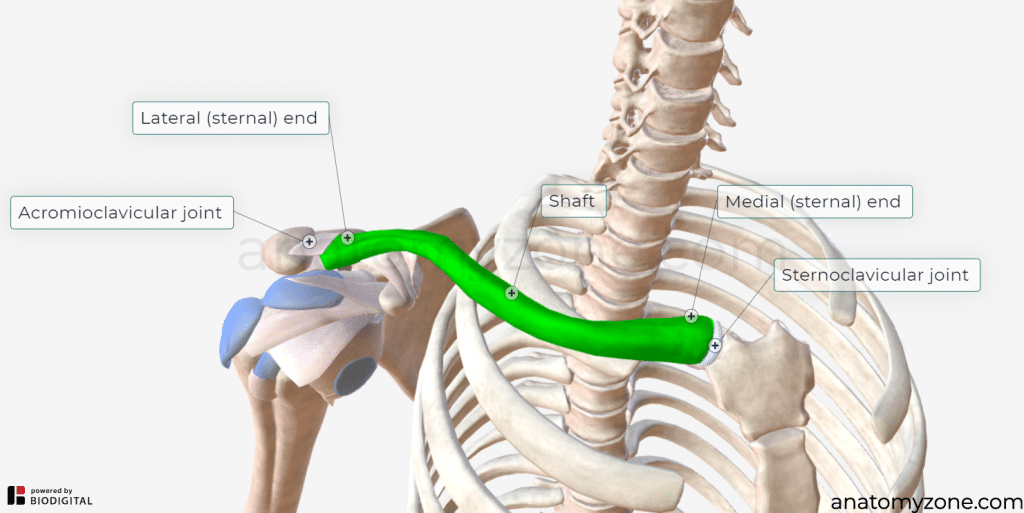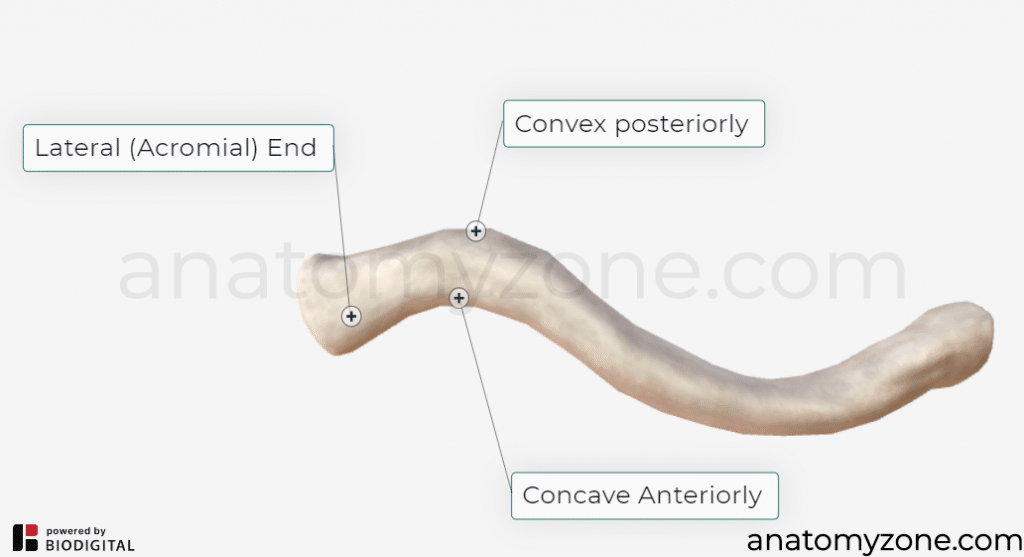Introduction
The clavicle is a double curved long bone which connects the arm to the trunk. It articulates medially with the sternum at the sternoclavicular joint, and laterally with the acromion process of the scapula.
It can be divided into three parts:
-
- Medial (sternal) end
- Lateral (acromial) end
- Shaft
Medial End
It is also known as the sternal end. The medial end is quadrangular and articulates with the clavicular notch of the manubrium of the sternum to form the sternoclavicular joint. The articular surface extends to the inferior aspect for articulation with the first costal cartilage.
Lateral End
The lateral end is also known as the acromial end. It is flat from above downward. It bears a facet that articulates with the shoulder to form the acromioclavicular joint. The area surrounding the joint gives an attachment to the joint capsule. The anterior border is concave forward and posterior border is convex backward.
Shaft
The shaft is divided into the medial two-thirds and the lateral one third. The medial part is thicker than the lateral.
The inferior surface has a ridge called the trapezoid line and a tubercle; the conoid tubercle for attachment with the trapezoid and the conoid ligament, part of the coracoclavicular ligament that serves to connect the collarbone with the coracoid process of the scapula.
Muscle Attachments
Anterior border: pectoralis major
Posterior border: sternocleidomastoid muscle (clavicular head), trapezius
Superior surface: deltoid muscle, trapezius
Inferior surface: subclavius





